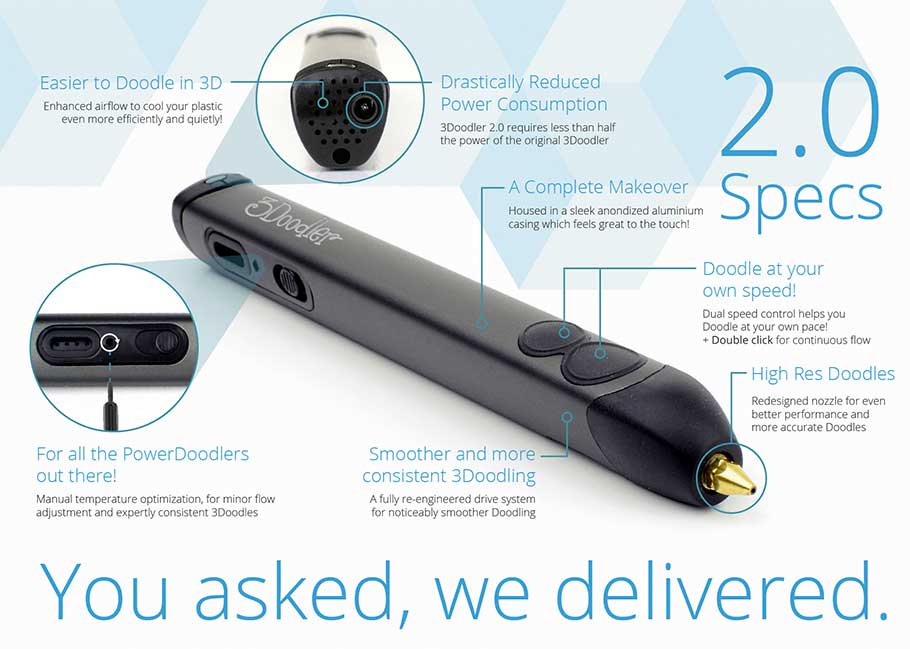The world’s first 3D-printing pen – WobbleWorks’s 3Doodler – was launched on KickStarter in 2013, where it received over £1.3 million ($2 million) in funding in just 34 days. This gizmo enables you to turn drawings into full-3D models on any surface, without the need of any software or computer. Unlike a normal pen, however, the 3Doodler doesn’t use ink, instead relying on filaments of ABS or PLA plastic, materials also used by most desktop 3D printers.
Once the heated plastic leaves the nozzle, it quickly solidifies into a strong, stable structure
Similar to its more expensive desktop counterparts, the 3Doodler prints by heating three-millimetre (0.1-inch)-thin strands of plastic, which need to be loaded into its back. After turning the 3Doodler on and waiting a few minutes for it to warm up, the LED indicator light will turn blue, which means the heated plastic can then extrude from the 3Doodler nozzle’s metal tip – the only potentially dangerous part, which can get as hot as 270 degrees Celsius.

Once the heated plastic leaves the nozzle, it quickly solidifies into a strong, stable structure, allowing you to build shapes with ease. Because the heated plastic can be drawn over almost any surface, including other plastic, even items like an iPhone case can be personalised in a variety of colours. There are two temperature settings so users can switch between the different melting points of ABS and PLA, and two main speed control buttons allow for the heated plastic to flow quicker or slower. This makes it possible to create large items with a sizeable area.

Post a Comment